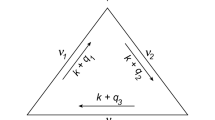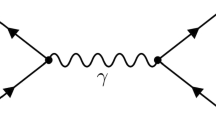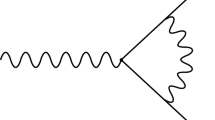Abstract
Many multi-loop calculations make use of integration by parts relations to reduce the large number of complicated Feynman integrals that arise in such calculations to a simpler basis of master integrals. Recently, Gluza, Kajda, and Kosower argued that the reduction to master integrals is complicated by the presence of integrals with doubled propagator denominators in the integration by parts relations and they introduced a novel reduction procedure which eliminates all such integrals from the start. Their approach has the advantage that it automatically produces integral bases which mesh well with generalized unitarity. The heart of their procedure is an algorithm which utilizes the weighty machinery of computational commutative algebra to produce complete sets of unitarity-compatible integration by parts relations. In this paper, we propose a conceptually simpler algorithm for the generation of complete sets of unitarity-compatible integration by parts relations based on recent results in the mathematical literature. A striking feature of our algorithm is that it can be described entirely in terms of straightforward linear algebra.
Similar content being viewed by others
References
V.A. Smirnov, Evaluating Feynman integrals, Springer Tracts Mod. Phys. 211 (2004) 1.
S. Gorishnii, S. Larin, L. Surguladze and F. Tkachov, MINCER: program for multiloop calculations in quantum field theory for the Schoonschip system, Comput. Phys. Commun. 55 (1989) 381 [INSPIRE].
S. Laporta, High precision calculation of multiloop Feynman integrals by difference equations, Int. J. Mod. Phys. A 15 (2000) 5087 [hep-ph/0102033] [INSPIRE].
C. Anastasiou and A. Lazopoulos, Automatic integral reduction for higher order perturbative calculations, JHEP 07 (2004) 046 [hep-ph/0404258] [INSPIRE].
A. Smirnov, Algorithm FIRE — Feynman integral reduction, JHEP 10 (2008) 107 [arXiv:0807.3243] [INSPIRE].
C. Studerus, Reduze-Feynman integral reduction in C++, Comput. Phys. Commun. 181 (2010) 1293 [arXiv:0912.2546] [INSPIRE].
D.A. Kosower and K.J. Larsen, Maximal unitarity at two loops, arXiv:1108.1180 [INSPIRE].
P. Mastrolia and G. Ossola, On the integrand-reduction method for two-loop scattering amplitudes, JHEP 11 (2011) 014 [arXiv:1107.6041] [INSPIRE].
J. Gluza, K. Kajda and D.A. Kosower, Towards a basis for planar two-loop integrals, Phys. Rev. D 83 (2011) 045012 [arXiv:1009.0472] [INSPIRE].
D. Bayer and D. Mumford, What can be computed in algebraic geometry?, math.AG/9304003.
W. Adams and P. Loustaunau, An introduction to Gröbner bases, Graduate Studies in Mathematics 3, American Mathematical Society, Providence U.S.A (1994).
D. Cabarcas and J. Ding, Linear algebra to compute syzygies and Gröbner bases, in ISSAC ’11: Proceedings of the 36th International Symposium on Symbolic and Algebraic Computation (2011).
B. Buchberger, Ein Algorithmus zum Auffinden der Basiselemente des Restklassenringes nach einem nulldimensionalen Polynomideal, Ph.D. Thesis, Universität Innsbruck, Innsbruck Austria (1965) [http://www.risc.jku.at/Groebner-Bases-Bibliography/details.php?details_id=706].
C. Eder, J. Gash and J. Perry, Modifying Faugère’s F5 algorithm to ensure termination, arXiv:1006.0318 .
J.C. Faugère, A new efficient algorithm for computing Gröbner bases without reduction to zero (F 5), in ISSAC ’02: Proceedings of the 2002 International Symposium on Symbolic and Algebraic Computation (2002).
G. Ars and A. Hashemi, Computing syzygies by Faugère’s F 5 algorithm, Results in Mathematics 59 (2011) 35.
R. Stanley, Enumerative combinatorics, volume I, Cambridge University Press, Cambridge U.K. (1997).
Author information
Authors and Affiliations
Corresponding author
Additional information
ArXiv ePrint: 1111.4220
Rights and permissions
About this article
Cite this article
Schabinger, R.M. A new algorithm for the generation of unitarity-compatible integration by parts relations. J. High Energ. Phys. 2012, 77 (2012). https://doi.org/10.1007/JHEP01(2012)077
Received:
Accepted:
Published:
DOI: https://doi.org/10.1007/JHEP01(2012)077




